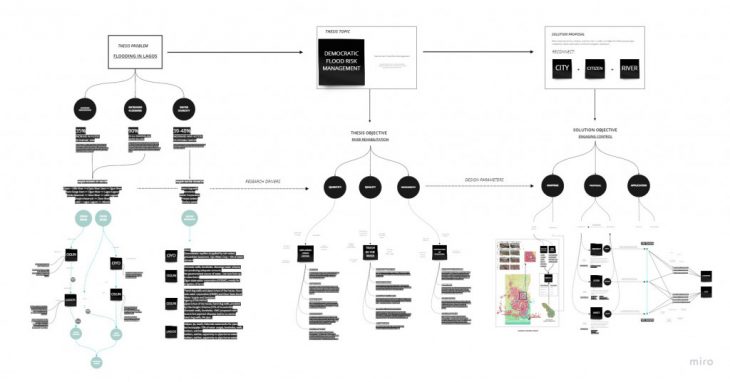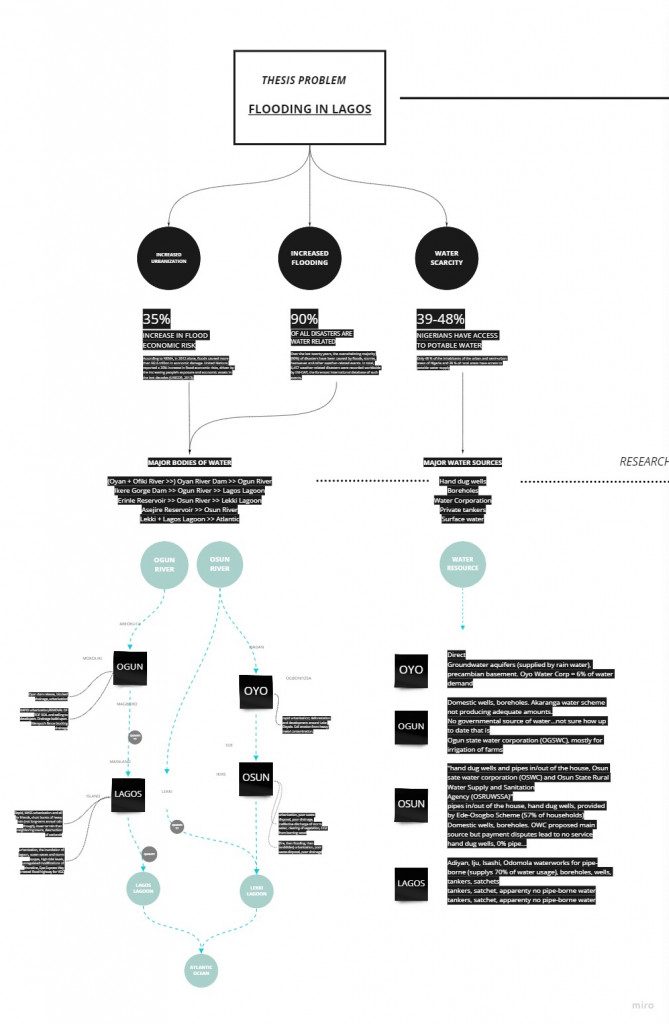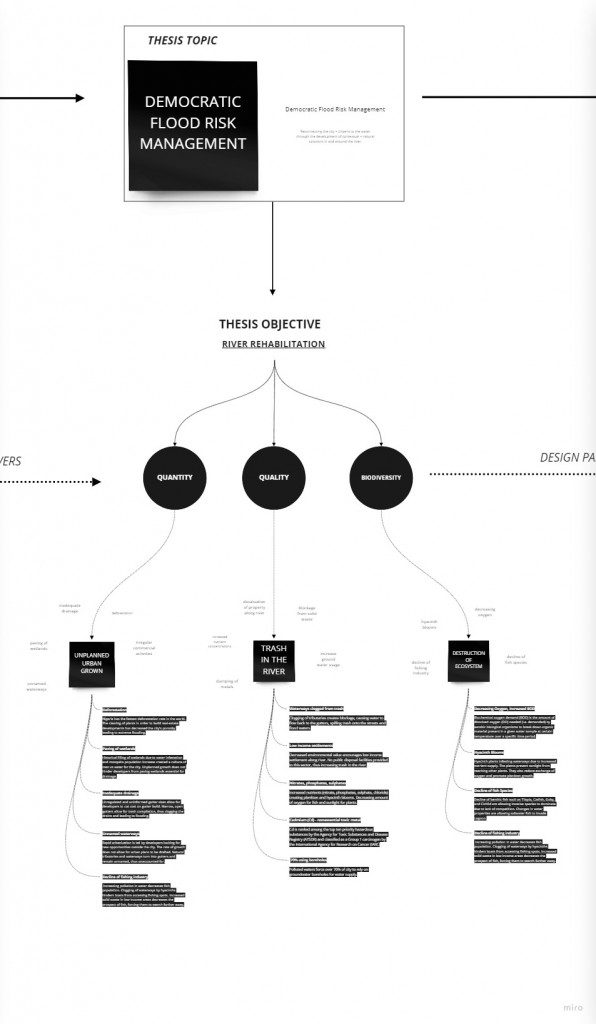
The cosmogramme is read from left to right, top to bottom. From top-down, the cosmogramme is arranged from the general topic of the section to the details. From left to right, it goes through the thesis topic, the problem research, and the solution development.

The first part of the cosmogramme outlines the topic, urban flooding in Lagos, Nigeria. The regional studies are developed by following the river in order to understand the upstream and downstream causes of flooding. Each cause is then listed according to its state location.

The next section of the cosmogramme goes into the detail of each flood cause, these are the research drivers. The three key research points are directed to the river’s water quantity, quality, and biodiversity. Agents that affect each driver are listed and the detail of how they link to urban flooding are illustrated.

The last section of the cosmogramme dives into creating a solution that aims towards the improvement of the river’s quantity, quality, and biodiversity. The first step is mapping out the location of the agents affecting these factors. The strategy of protecting the river, filter the river, and directing the river’s water flow are implemented through design decisions that are then simulated and revised based on their performance and appropriateness as a solution. They are then evaluated on how well they reconnect the city and the citizens to the rver in order to ensure the social innovation necessary for maintaining the proposal.
Working in these feedback loop is important for the development of a well evaluated thesis.